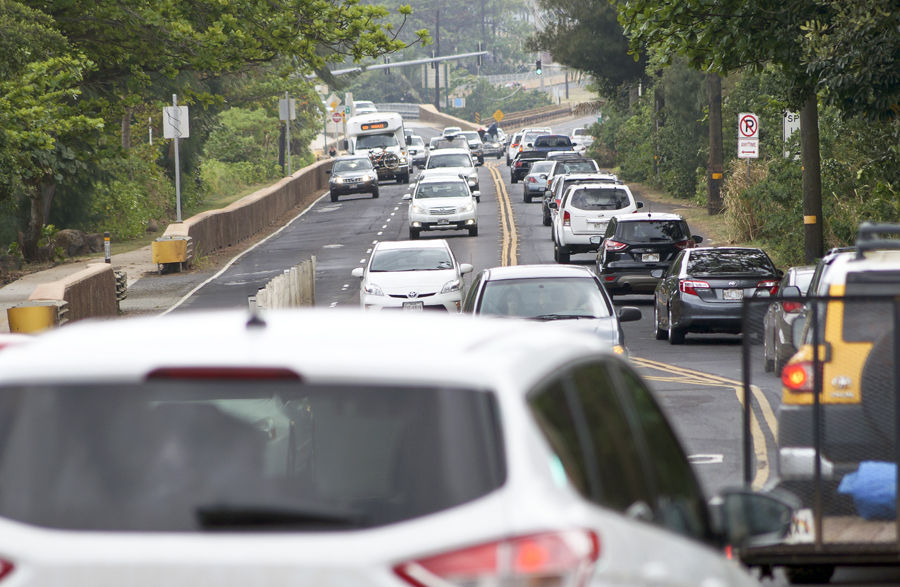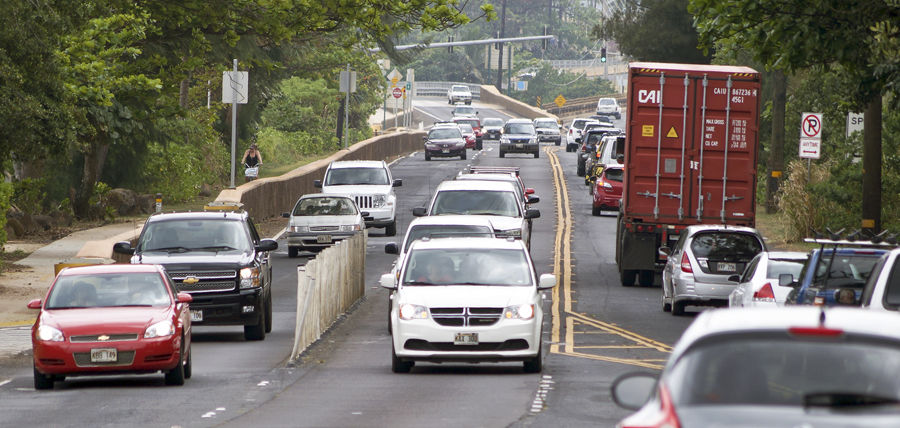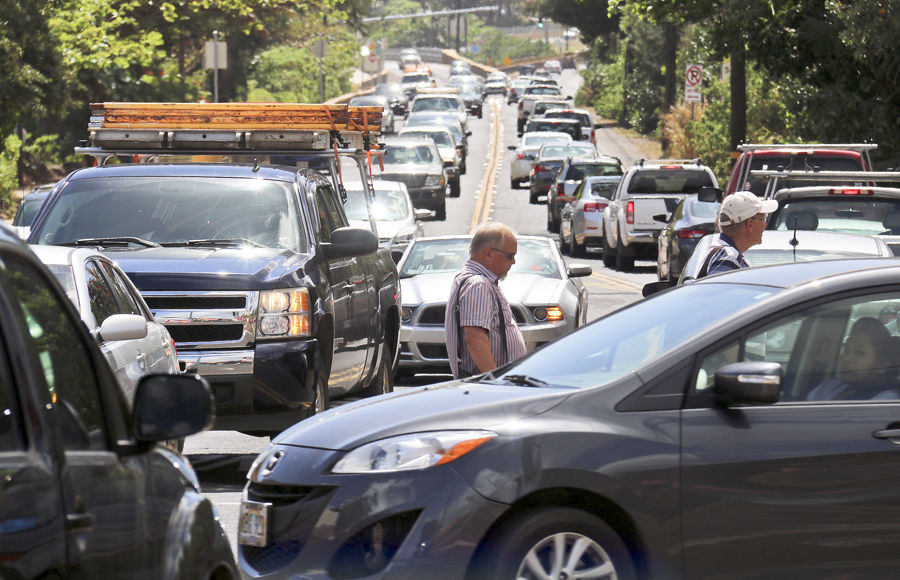LIHUE — State Department of Transportation officials say commuters traveling through Wailua and Kapaa may have to wait a little longer before larger projects to improve congestion along Kuhio Highway come to fruition. With limited federal funds available to help
LIHUE — State Department of Transportation officials say commuters traveling through Wailua and Kapaa may have to wait a little longer before larger projects to improve congestion along Kuhio Highway come to fruition.
With limited federal funds available to help offset the hundreds of millions of dollars needed to complete them, what beleaguered motorists may see over the next few years are creative, smaller-scale solutions to slowly manage and address specific congested areas.
“The big thing we see right now is that the Wailua corridor is tremendously critical for the people of Kauai and we’ve known that for a long time now,” Edwin Sniffen, the state Department of Transportation’s Highways Division deputy director, told the Kauai County Council on Wednesday. “We’ve been trying to move forward on a project to give some kind of relief to the congestion on this corridor, but at this time, the project is stuck in the process.”
Among the key projects coming soon is a nearly decade-old plan to add a mauka, Lihue-bound lane on Kuhio Highway stretching from the Kapaa Bypass Road intersection to Kuamoo Road. Doing this, Sniffen said, will alleviate a key bottleneck area at the bypass road, where cars back up while trying to merge onto Kuhio Highway.
Though efforts to kickstart the project began in 2005, the holdup occurred shortly after design work for the project was completed four years later.
At that time, environmental studies conducted to obtain federal funding determined that the roadwork would have adverse environmental or cultural impacts to the area, Sniffen said.
“This Wailua area is tremendously important in terms of cultural respects, so we wanted to make sure we went through the processes accordingly,” Sniffen said. “For some, of course, some of these projects aren’t coming up fast enough because the congestion relief is necessary, and some people see some of these (processes) that protect public property — like parks and those types of things that the public will use — as impediments to project delivery, but the DOT doesn’t see that.”
Recent accords struck with native Hawaiian consultant groups that include mitigation measures for the project served as a key catalyst for the project to move forward.
If all goes as planned, construction on the nearly $40 million project, which includes placing existing utilities underground, could begin by the end of next year.
“We don’t see anything really that’s going to hang us up moving forward,” said Sniffen, who said the funds and design plans are in place to move the project forward.
State DOT Kauai District Engineer Ray McCormick said the project should take about 18 months to complete.
Upgrades to the signalization system at key intersections on Kuhio Highway in the Wailua-Kapaa corridor, including those at Haleilio and Kuamoo roads, are also being considered to improve traffic flow, McCormick said.
We’re getting better all of the time, but you’re going to have to be patient with us,” McCormick said. “We’re working on that issue.”
Some officials and residents, however, say more must be done.
“Not everybody who comes to Kauai — God bless those of us who are still here — needs to live here,” said Poipu resident Terrie Hayes, who has lived on Kauai for the past 14 years. “At what point do you stop that? We keep saying we’re going to have this new development, but how much can we actually take?”
Councilman Gary Hooser said an early morning traffic accident along Kuhio Highway last week that injured a Kapaa motorcyclist and snarled traffic for several hours by the Wailua Golf Course underscores the urgency for immediate congestion relief measures.
“This traffic problem affects lives,” Councilwoman JoAnn Yukimura said. “It affects businesses, where people live, where people buy property and whether people can get to work or school on time.
It also affects whether this island is going to welcome future development or not — how can we welcome development when we can’t even handle our existing traffic?”
Plans for an estimated $300 to $600 million Kapaa Relief Route that called for a number of improvements on Kuhio Highway between Hanamaulu and Kapaa Stream are no longer being pursued, Sniffen said.
That’s because environmental studies revealed the route and all three of its alignment options had “significant impacts on cultural and historical properties” in the Wailua area, Sniffen said.
He pointed out it would also take years to accrue enough federal funds to carry out the project, because Kauai is projected to receive about $190 million in federal funds over the next two decades for congestion-related projects.
What state officials are doing instead, Sniffen said, is reaching out to community groups and the County of Kauai to help prioritize future improvement projects to Kuhio Highway along the Wailua-Kapaa corridor.
These projects, McCormick said, include extending Pouli Road in Waipouli to connect to the Kapaa Bypass Road and adding a lane to the one-way bypass extension section from Kuhio Highway to the Olohena Road roundabout.
“We have a gap in the system right now that we just cannot fill from a funding perspective, so because of that, we need to look at what we can afford and what we cannot,” Sniffen said. “What we cannot afford, I don’t want to spend the time or the resources on it because I want to push for the things that we can do.”




